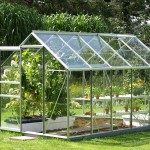UNPACKING PERFORMANCE TASKS
Performance tasks:
- Allow for diversity
- Use scoring criteria given in advance
- Are highly engaging
- Promote critical thinking and/or problem solving
- Promote peer and self-assessment
Key Points for Performance Tasks
- Student performance should be described on a checklist or scoring rubric.
- Task contains a written prompt that cues the student to perform some type of task that requires a demonstration, presentation or product creation.
- Measures learning targets across strands or content areas.
- Should measure higher-level cognitive processes.
- May be completed over time.
This is an example of a performance task for health or a personal living class. Note that there are two parts to this performance task. The first part is brainstorming a list of habits. Then students need to pick one habit to describe in depth and create a visual. It mentions the use of a rubric which will be used to score the performance task. What would be the essential elements which would be included on the rubric?
Part I: Brainstorm a list of habits you, your family, friends of yours or people you know participate in on a regular basis. These can be positive or negative. List may include, but not be limited to the following: coffee, smoking, ice cream, breakfast at the local diner, fast food, soda, vending machine snacks, indoor tanning, lottery tickets, exercise, video games, etc.
Part II: a) Choose one habit and write a description of how and why the habit can be costly including your computation of the cost of your habit. b) Create a visual of your habit including: costs (financial, physical, emotional, social, etc.), positives and negatives, pictures/graphics. Refer to the scoring rubric as you create your description and your visual.
This ELA example requires students to write an essay using specific text evidence. In assessing the quality of the student’s response, what would be some of your look fors? What might be included in a scoring guide or rubric to help you assess their level of competency on this task?
How does Scout change over time in To Kill A Mockingbird? Give specific text evidence for:
- What do her actions tell you about how she changes?
- In what ways does the author use Scout’s effect on others to show how she changes?
- What is Scout’s motivation for how she changes?
- How does the author use Scout’s speech to show how she changes?
 Your school has decided to build a greenhouse and garden on the side of the school. The principal has asked your class to give a written estimate of the cost of building the greenhouse and creating a large garden. You will need to calculate how much metal framing and glass is needed and how many bolts/fasteners and hinges are needed for the greenhouse. You also need to calculate the costs of shelves, pots, soil, plants, and other materials for growing plants. In addition, you need to calculate the cost of creating a garden next to the greenhouse. Use the materials information sheet to help you calculate the total cost.
Your school has decided to build a greenhouse and garden on the side of the school. The principal has asked your class to give a written estimate of the cost of building the greenhouse and creating a large garden. You will need to calculate how much metal framing and glass is needed and how many bolts/fasteners and hinges are needed for the greenhouse. You also need to calculate the costs of shelves, pots, soil, plants, and other materials for growing plants. In addition, you need to calculate the cost of creating a garden next to the greenhouse. Use the materials information sheet to help you calculate the total cost.
The Friends of Nature youth club has been studying a local greenbelt area for several years. The plants and land shapes in the area have changed very little, except that a very strong wind about a year ago blew down nearly all the large dead trees. Some of the other things the club has learned are shown in the table in the next slide.
| Animal | Main Food Source | Nesting area | Pop. 4 Years Ago | Pop. 2 Years Ago | Pop. Now |
|---|---|---|---|---|---|
| Fox | Mice… | Dens | 10 | 12 | 2 |
| Rabbit | Grass… | Burrow | 70 | 90 | 130 |
| Squirrel | Nuts… | Hollow Trees | 40 | 45 | 15 |
| Duck | Water plants, grass near stream | In weeds near stream bank | 30 | 28 | 35 |
Predict the following:
- Which food supply may be reduced if current trends continue? What evidence supports your prediction?
- Which animal population may become out of control if predators do not come into the greenbelt? Why? What evidence supports your answer?
- Which populations are likely to remain stable? Why? What evidence supports your answer?
Design a plan for managing the greenbelt animal population.
Coaching Companion
- St. Charles Early Learning Writing Rubric
- Waynesville Early Learning Writing Samples
- St. Charles Early Learning Physical Development Rubric
- St. Charles Early Learning Mathematics Rubric
- St. Charles Early Learning Reading Rubric
- St. Charles Early Learning Social Development Rubric
- Video: Waynesville Personal Knowledge Performance Assessment and Rubric
- St. Charles Progress Report

